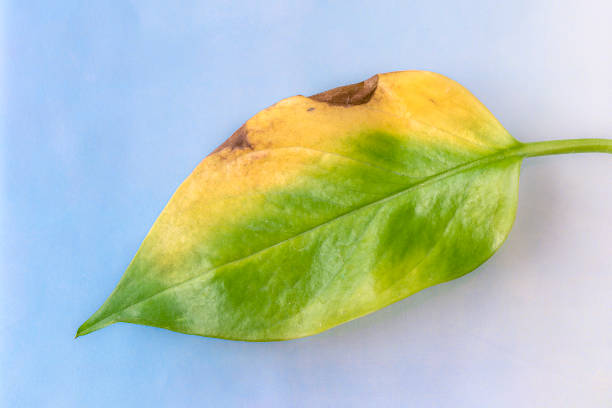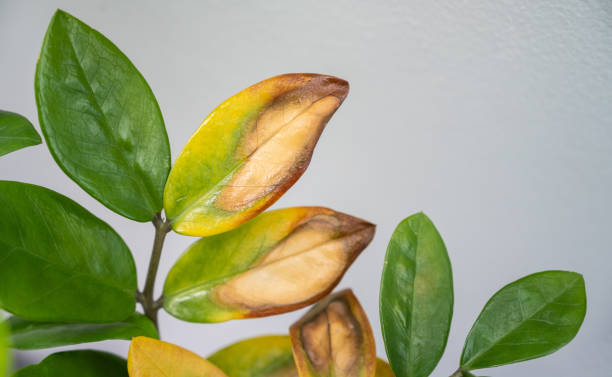Contents
- 1 INTRODUCTION
- 1.1 1. WHAT CAUSES LEGGY GROWTH IN PLANTS AND HOW TO PREVENT IT?
- 1.2 2. HOW TO FIX YELLOWING OR DROOPING LEAVES IN LOW-LIGHT PLANTS
- 1.3 3. HOW DOES LOW LIGHT CAUSE SLOW PLANT GROWTH?
- 1.4 4. WHAT CAUSES BROWN CRISPY TIPS ON PLANT LEAVES?
- 1.5 5. WHAT CAUSES PLANTS TO LEAN TOWARD SUNLIGHT?
- 1.6 6. WHY AREN’T YOUR PLANTS FLOWERING? COMMON CAUSES AND FIXES
- 1.7 7. WHAT CAUSES FADED LEAVES IN LOW-LIGHT CONDITIONS?
- 2 CONCLUSION
INTRODUCTION
Have you ever imagined our world without the sun? For a few days, it is like chill weather to enjoy. But within a few days you want sunlight to get the energetic feel, a fresh nature smell and bright light to do your daily routines. For Humans, you can survive a few weeks without proper light, like in Antarctica places of extreme winter or rainy weeks.
But plants’ sunlight is like a raw material for their cooking process. Sunlight is important for Photosynthesis, a process of converting sunlight-water-carbon dioxide into glucose aka energy and spread throughout the plant. This energy encourages every growth aspect of the plant.
Imagine your plants suffering in insufficient light and showing signs but you aren’t aware of it. In this blog post, you will learn about 7 important signs that indicate your plants aren’t getting enough light. Along with these, you will learn about how to fix every sign that indicates a problem. Buckle up to save the plants.
1. WHAT CAUSES LEGGY GROWTH IN PLANTS AND HOW TO PREVENT IT?

- Why is my plant leggy?
This is a question searched by plant persons and beginner gardeners. what is a leggy plant, If you are a beginner plant person, you might notice these things in plants a leggy stem without any leaves or more space between leaves and no fruits or vegetables in it.
The reason behind leggy plants is lack of sunlight which makes a plant search for sunlight and stretch toward light sources. A natural process of searching for light to survive. Lack of sunlight means less food than normal, to keep surviving plants save their energy with fewer leaves and no fruits or flowers. This process is called etiolation.
- How to fix leggy plants indoors
Most of the indoor plants face etiolation or leggy plants. To fix these rotating containers regularly, try to move the plants based on the plant’s light needs, and nearby light available spots. If you don’t have any natural available in indoors try to use Grow Lights to provide light to the plants.
Providing enough light to plants avoid leggy growth you can see leaves sprouting and fruit or flower blooms soon. Leggy plants might happen not only by placing plants in low-light areas but also by overcrowding plants blocking the light and water. If you still having leggy issues after setting proper light or moving the plant, you’ve to adopt proper watering.
2. HOW TO FIX YELLOWING OR DROOPING LEAVES IN LOW-LIGHT PLANTS

- Why are my plant leaves yellow?
Sometimes you might choose the low-light plant or shade-loving plant for indoors and suddenly notice yellowing leaves or leaves drooping is bothering you. Especially the plant is placed as a home decor piece. The main reason behind leaves yellowing is the lack of chlorophyll production due to insufficient light.
For beginners it’s hard to identify the leaf’s yellowing reasons, it’s also a sign of overwatering and underwatering, nutrient deficiencies, pest and disease attacks, soil problems, chemical exposure and temperature stress. The signs of low-light yellowing are evenly yellowing no brown spots, and older bigger leaf yellowing.
The solution for this yellowing is to identify the plant’s light need and match it with the light of your home. If the natural sunlight is limited you can also use grow lights and rotating plants based on seasonal changes. Prune yellow leaves to prevent plants from wasting energy on dead parts.
- Why are my plant Leaves Drooping?
Drooping leaves is a stress sign for plants, a coping mechanism to save energy due to a lack of sunlight and limited photosynthesis, which leads to low energy production. Drooping leaves can also happen for various reasons.
Low-light conditions, environmental stress, nutrient deficiencies, improper humidity levels, overwatering and underwatering also cause leaves to droop. Leaves drooping along with stretched stems and leggy plants leaf fading are sign of low light. Adjusting watering practices and rotating containers based on seasonal light changes fix the leaves drooping.
3. HOW DOES LOW LIGHT CAUSE SLOW PLANT GROWTH?

- Slow growth due to low light
Some of the plants in the garden grow more slowly than other plants, even if it is the same family or a twin plant you notice less height, fewer leaves or no fruiting. The reason behind this stunted growth or slow growth is limited light aka limited glucose, which this glucose produced by the photosynthesis process. The limited glucose gives limited energy to plants and affects their growth.
Sunlight gives two types of light red and blue light. Blue light promotes vegetative growth (stems & leaves), regulates stomal opening (Controls water loss & gas exchange) and chlorophyll production, and influences orientation. Red light promotes flowering and fruiting, seed germination, and bud formation and enhances photosynthesis. You can adjust intensity in grow light to get proper growth.
4. WHAT CAUSES BROWN CRISPY TIPS ON PLANT LEAVES?

- Why are my plant leaves turning brown
This is a search query searched by every gardener at least once in their garden journey. But why? Leaves turning brown happen to every plant for different reasons. But mostly the leaf browning happens because of lack of sunlight.
The reason behind the browning is caused by light stress that causes dehydration and all these factors lead to tissue damage. Giving proper light to the plant needed is a solution and proper watering helps to avoid future damage to the plant. Trim off the already browned leaf to avoid the plant wasting energy.
5. WHAT CAUSES PLANTS TO LEAN TOWARD SUNLIGHT?

- What is phototropism and how does it affect the plants
Phototropism is a process a plant bends or grows towards light because of a lack of sunlight. Nature’s survival response is to capture the needed sunlight which is essential for photosynthesis.
Phototropism or leaning toward light occurs due to auxins (plant hormones). These hormones redistribute themselves in response to light. Phototropism causes leaning plants and weakened stems. In severe issues of lack of light, the plant going to be weak and thin and struggle to support the plant.
To prevent phototropism problems, rotate the plant pots regularly to get even light through the plant. If natural light is not available in the space try to use grow light to provide the required light or if the sunlight is limited use reflective surfaces to get more sunlight for plants. Prune elongated stems and use support stakes to promote plant growth and prevent phototropism.
6. WHY AREN’T YOUR PLANTS FLOWERING? COMMON CAUSES AND FIXES

- Why aren’t my plants flowering?
A disturbing question for garden beginners and plant persons. Not only beginners but sometimes years experienced gardeners also face these kinds of issues and struggle to understand what’s going through inside.
The reason behind the confusion is the plant might look healthy with foliage but there is no flowering or fruiting. I faced this issue in my ground garden rose plant, I tried different kinds of fertilizers and watering methods, altering organic matters. But to my surprise, a hard pruning and removing the nearby tall plant that blocked the sunlight for this plant retained the entire plant, and I got continuous blooms.
The main reason behind the healthy foliage and no bud formation is insufficient light, most of the flowering and fruiting plants (including veggies) need intense direct sunlight to produce more glucose (energy) by photosynthesis. Without proper light, they prioritize leaf growth for more photosynthesis process over fruiting or flowering.
Providing the plant’s ideal temperature always enhances the growth of the plant and thriving garden. Once you fixed the proper lighting for the plant whether it is natural light or artificial light, you should hard prune the plant, adopt proper watering and feed the needed fertilizer for growth.
The reason behind hard pruning is you save plant energy from wasting too much on foliage, in a new spot the plant is going to get needed sunlight the new blooms grow along with fruits or flowers easily. Intense heat-loving plants in sunny spots dry quicker than houseplants so you have to adopt watering practices based on plant need. Feeding fertilizers after all this care speeds up the blooming process.
7. WHAT CAUSES FADED LEAVES IN LOW-LIGHT CONDITIONS?

- Pale leaves due to low-light
Pale-coloured or faded leaves in houseplants are an early sign of low-light aka light stress in plants. The science behind this is simple, Low light leads to low chlorophyll production an essential for photosynthesis (that’s why greener-looking plants are healthier).
Pale leaves happen for three main reasons, without enough light plants struggle to synthesize chlorophyll production. Imbalanced photosynthesis without proper light the food production process is disrupted and leaves show signs of faded or pale leaves. Also, faded leaves are a survival mechanism of plants adapting to light deficiency.
Increasing the light exposure, and providing the needed light for the plant is the first step. Rotating plants regularly helps to get light evenly through the plant. Avoid overwatering because pale leaves are also a sign of overwatering. Excess fertilizing might cause pale leaves so look out for the frequency and quantity.
CONCLUSION
This blog helps you identify seven important signs of low-light stress in your houseplants. Common indicators include leggy growth, yellowing leaves, pale leaves, and stunted growth. I also provide some easy fixes for these issues.
The goal of my previous blog posts has been to help you assess your plant’s light needs using simple guides and practical tips. In addition to discussing light requirements, I will also outline the signs of insufficient sunlight and offer some straightforward solutions.
Plants do not require advanced tools or expensive fertilizers to thrive; they just need proper care and basic requirements, such as adequate lighting. In my earlier post on matching light with plant needs, you learned about the various light requirements of different plant types. In this blog post, I will highlight some common blind spots and their solutions.
To learn more about the light needs of plants, check out the “Light Requirement” category. For more information on container gardening, visit my website at mypotsgarden.com to enhance your plant-growing experience.


Pingback: Basics of Container Gardening
Pingback: BEST POTTING MIX FOR CONTAINER GARDENING: FULL GUIDE